At first glance, the building at 1906 Brown Street looks like a fairly ordinary brick storefront. But there’s more than meets the eye to this historic structure.
The oldest section of the building sits behind the portion currently fronting Brown Street and was originally a church.
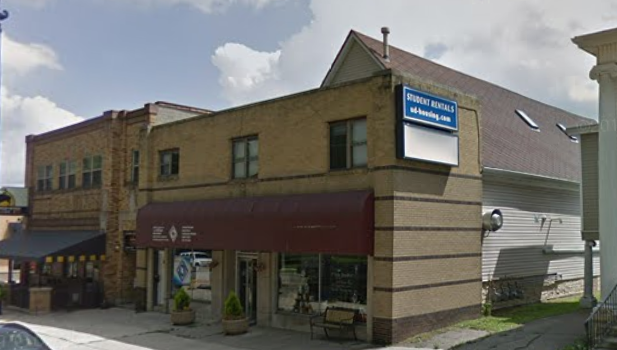
Originally known as the Rubicon Presbyterian Church at its founding in 1904, the church building was erected thanks to donations from John H. Patterson and his family.
This prompted a name change to the Patterson Memorial Presbyterian Church, thanks to “the suggestion of the older members of the congregation in honor of the memory of Frank J. Patterson, Robert Patterson and their parents, with whom the residents of Rubicon had long been associated, and whose memory they gratefully cherish.” (The Patterson Homestead is just across Brown Street.)
The cornerstone was laid on Nov. 30, 1906, and on May 5 of the following year, the new church at Brown and Lowes streets was dedicated in a ceremony led by Rev. J. W. Winder.
This 1918 map shows the frame structure that served as the church, and you can see that the storefront closest to Brown has not been built yet and neither has the rear addition.
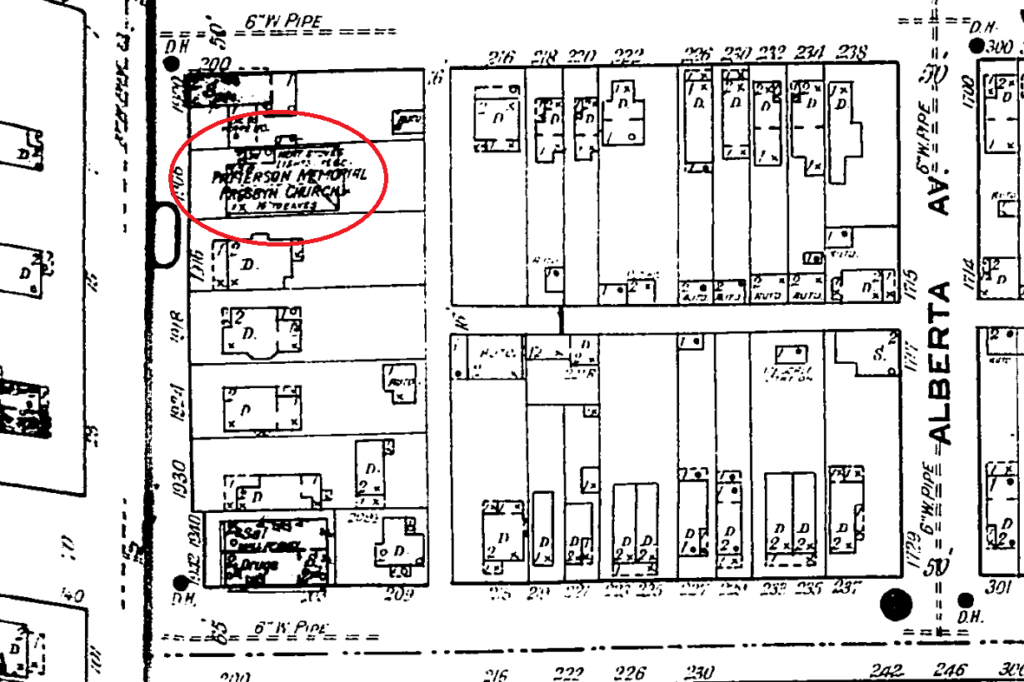
In 1925, the growing church began construction on a much larger building just north at Brown and Stonemill. Six years after it moved away from 1906 Brown, Patterson Memorial church was acquired by the congregation of Raper M. E. church, which had been located at East Fifth and Jackson in the Oregon District, where Goodwill currently stands.
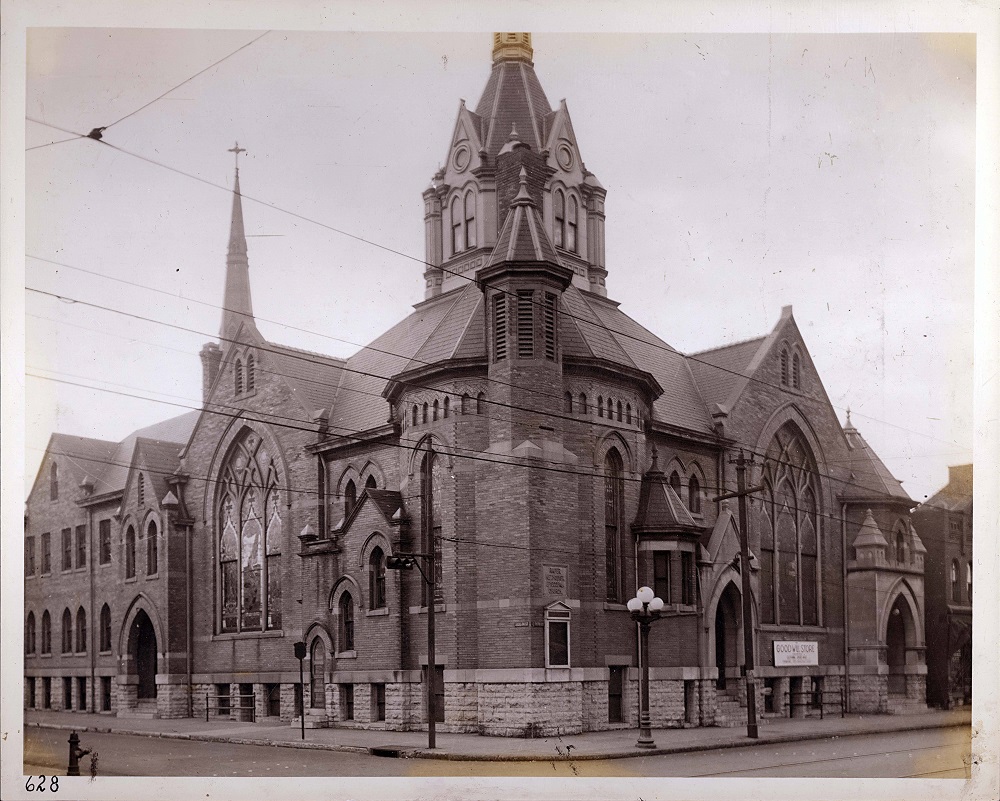
The Brown St. church later came to be known as South Park United Methodist Church which has recently been a target for redevelopment but has not moved forward. (We’ll look closer at this church in our next article.)
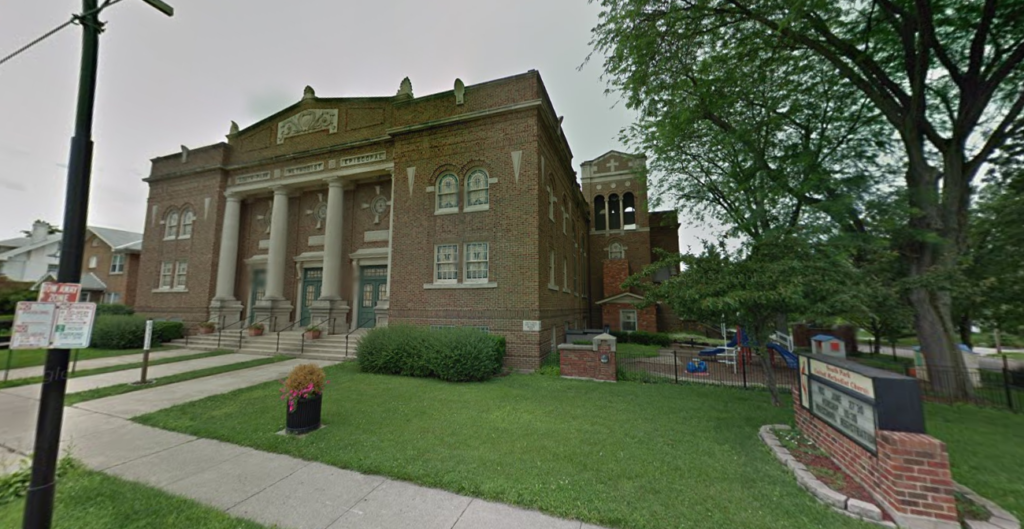
Returning to the 1906 Brown Street building, it was occupied by the Oakwood Upholstering Company in 1928.
On Nov. 7 of that year, a Roger Powell, who was unloading furniture in front of the store, was struck by a car which knocked him unconscious onto the sidewalk. The car sped away and was pursued by a bystander who lost sight of it at Schantz Ave. Powell was taken to Miami Valley hospital and fortunately recovered.
In 1931, 1906 Brown St. was occupied temporarily by grocer King’s Market, located next door at 1900 Brown, while they replaced their store with a new building.
The following year, the General Furniture and Upholstering Co leased the building from King’s Market, having outgrown its space at 1132 Creighton Ave.
In 1933, George R. Jollay of General Furniture purchased 1906 Brown Street from Arthur King for $7,500. At that time the article noted that the site “fronts 50 feet on Brown street and has a depth of 80 feet.”*
Soon after a “new and greater” General Furniture and Upholstering Co opened, offering “beautiful and unusual suites and odd pieces that make a house a home” and “upholstered living room suites that are custom made and hand-tailored with double-stitched edges, welted seams and the best of filling.” The location of 1906 Brown Street was described as “4 squares south of the N.C.R.”
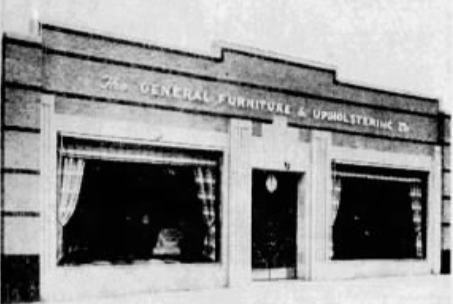
In 1938, General Furniture made the seats for a Continental Beacon that would go on a unique trip: an endurance drive by a “Daredevil Matthews” and his son, who drove nonstop through the streets of Dayton for 240 hours. (The spectacle was sponsored by an ad agency to demonstrate the quality of the car.)
For their journey, the drivers were outfitted with some interesting provisions from other Dayton businesses, as described in the Dayton Herald:
Father and son must keep fit and, as no solid food is used, their diet will consist of bread and milk. They must have a grade of milk that is rich and pure and contain vitamin D, and this is being obtained by Moler’s Belmont Dairy company, 3230 South Smithville Road. For quality bread, they have selected “Miami Maid Bread,” made exclusively by the Dayton Bread Company … As the drive goes on, father and son will drink coffee supplied by Karl C. Bogart, in the Arcade market, and Lion lager beer from the Western Distributing company. These two beverages will be used as stimulants during the 10-day and 10-night drive.
The duo’s schedule had them passing numerous local businesses at predetermined times on the first day, including General Furniture at 1906 Brown at 11:20 am. Then they drove around the towns surrounding Dayt0n, while staying within a 15-mile radius.
On Nov. 3 they entered the home stretch, “showing signs of fatigue” but “still smiling.” The journey concluded at Harley-Barton, the sponsoring ad agency, located at 3808 North Main Street.
In 1947, the premises were known as Jollay’s Furniture store, and were sold in probate court to settle the estate of George who had just passed away. At that time it was described as “an ideal business location, 46 70×150 (and) between Gallaher’s Drug Store, Kroger’s and King’s Market. Stoker, truck garage attached with fluorescent lights. The upstairs consists of a loft in rear, 2-bedroom apt. in front with separate gas furnace and sleeping porch.
In 1950, the building at 1906 was a paint store, as can be seen here (and note the additions that have been built since the previous map).

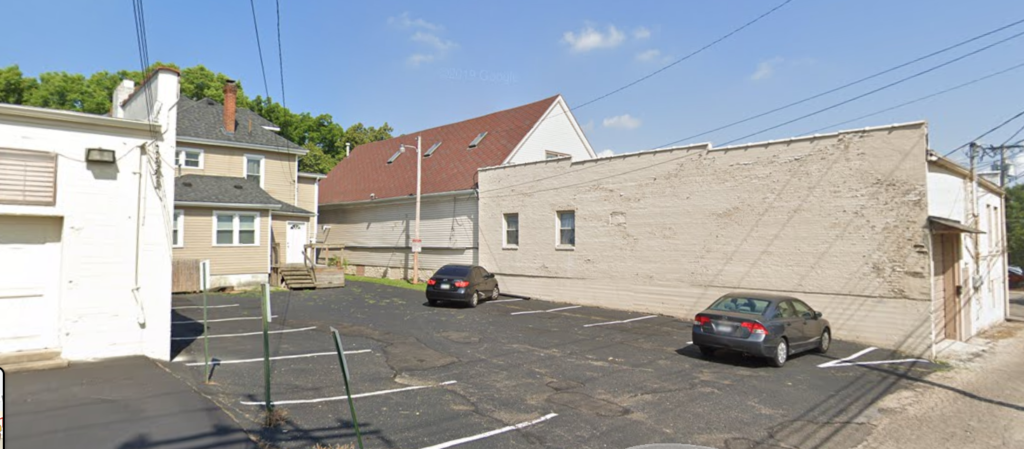
The building held the Bockrath Oriental Rug Gallery in the early 1980s. More recently it has become tend & flourish, “a collective of small, women-owned businesses in the fields of art and wellness.” The The owner and executive director is Kate Edmondson, and the space contains an art gallery and studios, as well as services ranging from “intuitive art readings to Thai bodywork, reiki, professional counseling, textile creations and more.”
Quite a bit more than you may expect if you walk past 1906 Brown and only give it a cursory look.
Sources
* “Dayton Property sold for $7,500,” The Dayton Herald, April 19, 1933.
Dayton Daily News Archives
Church image courtesy of Dayton Metro Library
Maps courtesy of Sanborn Fire Insurance Maps
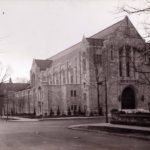
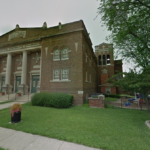
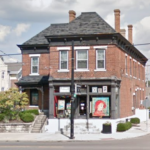
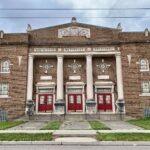
Your articles are so interesting to me. At 86 and a native Daytonian who has lived here most of her life – exceptions one year on the Stanford Univ. campus in Palo Alto and three years in Colorado Springs – it’s just fun to read your work. I remember Brown Street when there was a Roderer’s Shoe Store on it, and an Italian restaurant in a house, east side of Brown north of Stewart. I ate there once or twice in the 1950’s. Never had so many courses. There was a magic store on the west side and a costume store at the entrance to Woodlawn Cemetery. Lots of interesting little places.
Next time I walk by, I am going to have to look twice – I had no idea. And that Raper M. E. church was gorgeous!